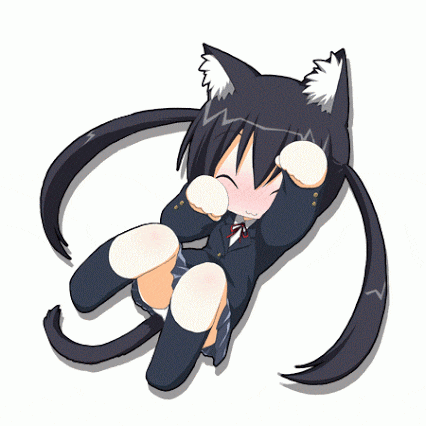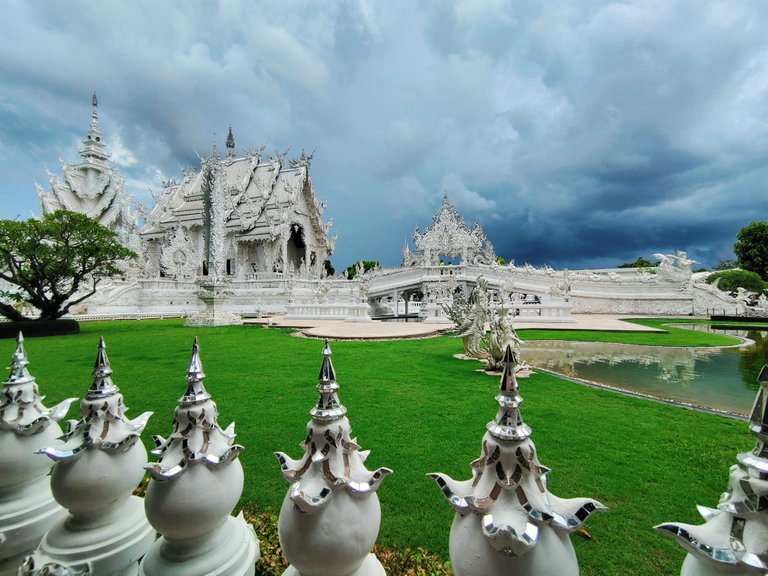
Hello everyone
I found myself with an incredible opportunity to embark on a journey to the enchanting temples of Chiang Rai, a dream I had nurtured for years. It all began when I stumbled upon a brochure at the hotel's tour counter, showcasing a tantalizing tour package that promised to take me on a one-day adventure to explore the captivating beauty of Chiang Mai, the stunning temples of Chiang Rai, and more.
Without hesitation, I purchased the tour package, eagerly counting down the hours until the day of the tour. The excitement coursing through my veins made it nearly impossible to sleep the night before, and as dawn broke, I eagerly awaited the arrival of the van that would transport us to the mystical world of temples. As the clock struck 7 a.m., a comfortable van pulled up in front of the hotel.
The road stretched before us, winding through picturesque landscapes, with lush greenery and rolling hills painting a breathtaking panorama outside the windows. As we chatted and laughed with newfound friends during the journey, the 2.5-hour ride seemed to pass quickly.
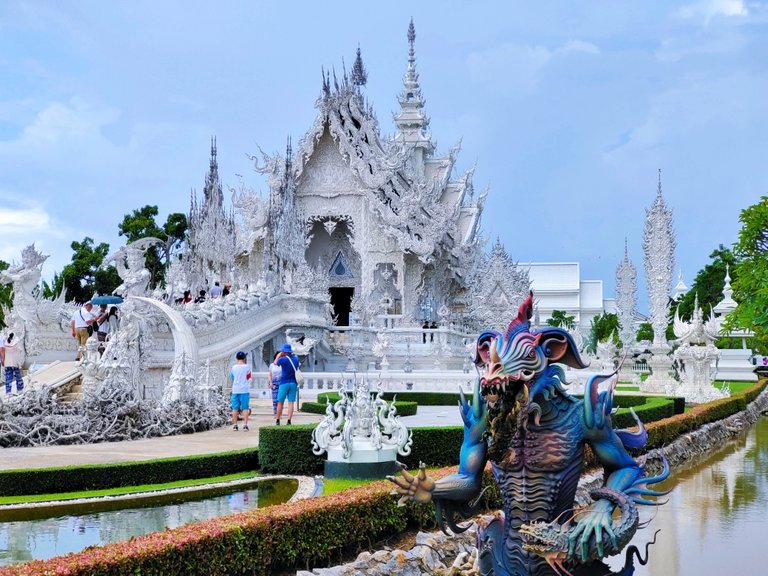
Finally, we arrived at our first destination, the renowned "Wat Rong Khun" or the White Temple, located in Pa O Don Chai Subdistrict, Mueang District, Chiang Rai Province. The moment we stepped out of the van, I stood in awe of the temple's ethereal beauty. The pristine white facade sparkled under the golden rays of the morning sun, and intricate carvings adorned every inch of its surface, telling stories of ancient myths and legends.
After our exploration, our guide informed us that Wat Rong Khun is open to visitors daily from 6:30 a.m. to 6:00 p.m. I marveled at the dedication of the temple to welcome guests with such generous visiting hours. The admission fee for foreign tourists was 100 baht per person, a small price to pay for the privilege of experiencing such a breathtaking place. It warmed my heart to know that Thai people could visit for free, a gesture that encouraged a deeper connection between locals and their cultural heritage.
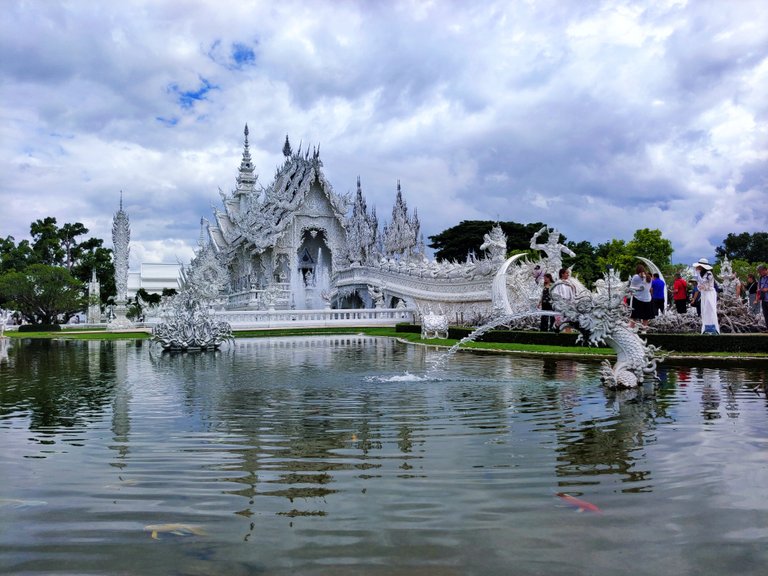
As I stood before the entrance of Wat Rong Khun, my eyes were immediately drawn to a serene and vast pond that lay peacefully in front of the temple. Crossing the pond was a beautiful bridge, a symbolic path representing the journey of the mind towards enlightenment – the cycle of samadhi leading to the Buddha landscape.
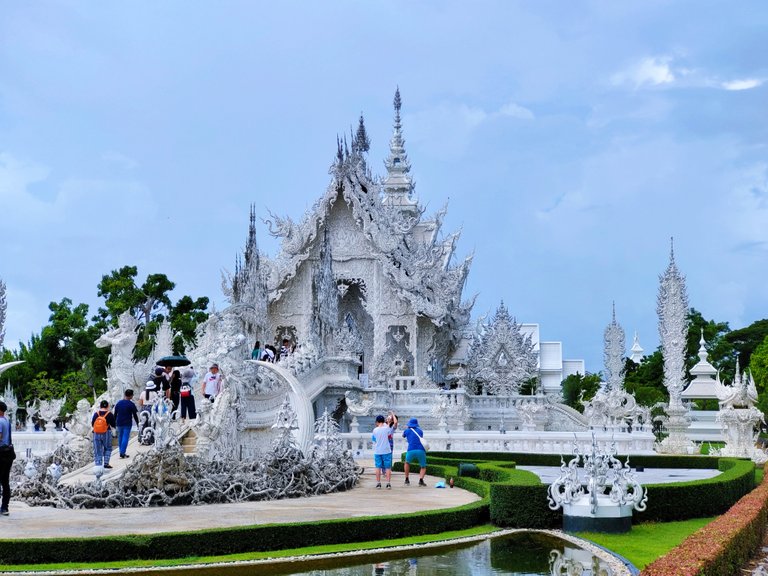
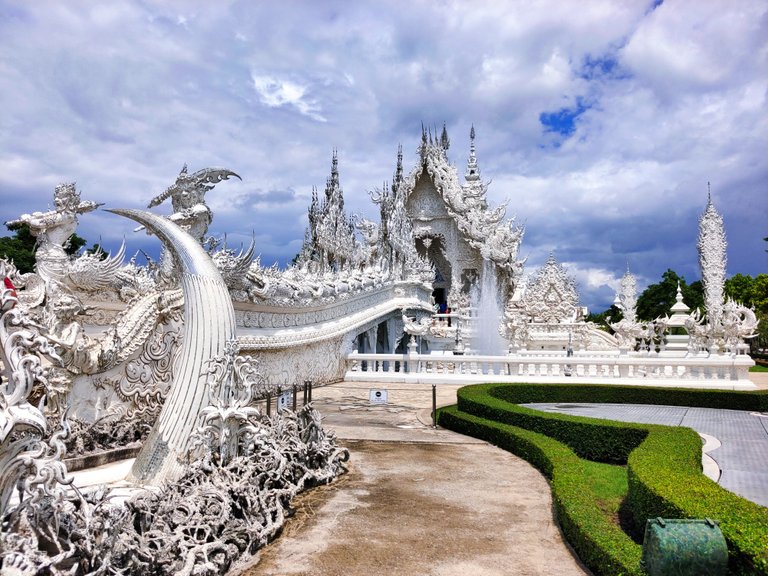
As I approached the bridge, I noticed a remarkable design in its structure. The bridge was shaped like a small semi-circle, which represented the vast human world, with fangs resembling the mouths of demons or Rahu. This symbolism held a deeper meaning; it signified the presence of defilements and impurities that reside within the human heart, much like the torments of hell. The pathway across the bridge mirrored the struggles we all face in life, grappling with our inner demons and temptations.
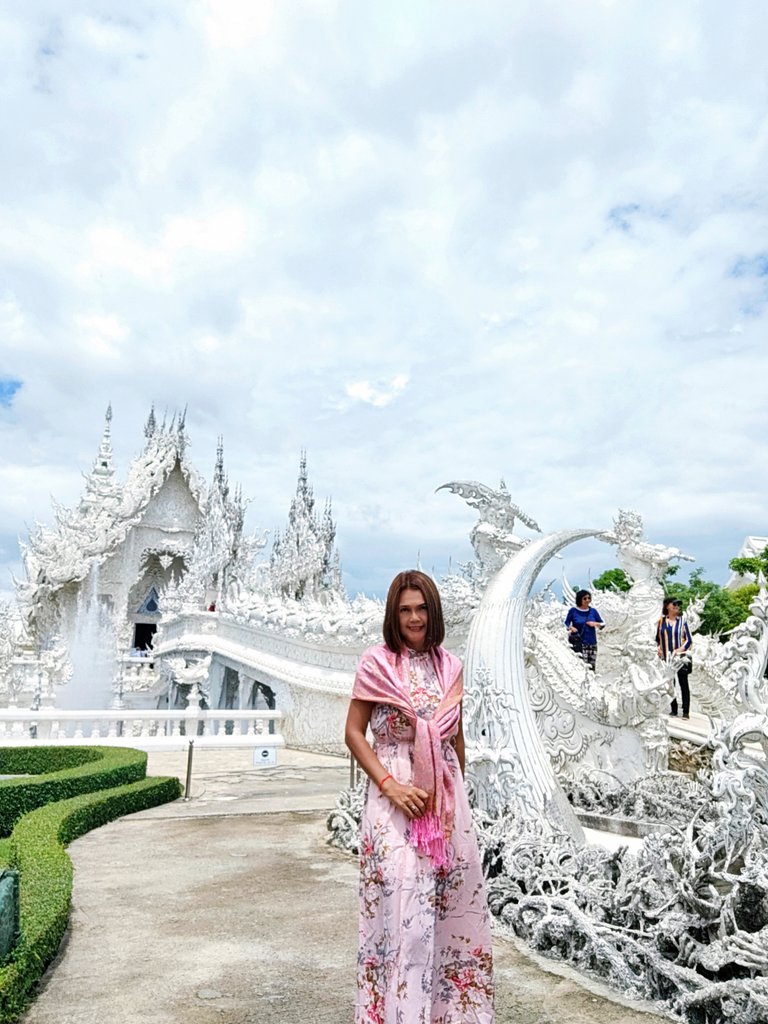
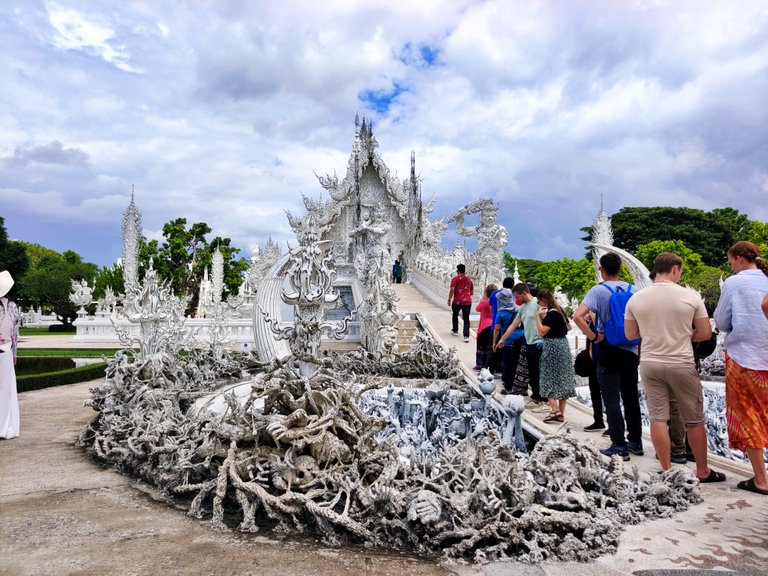
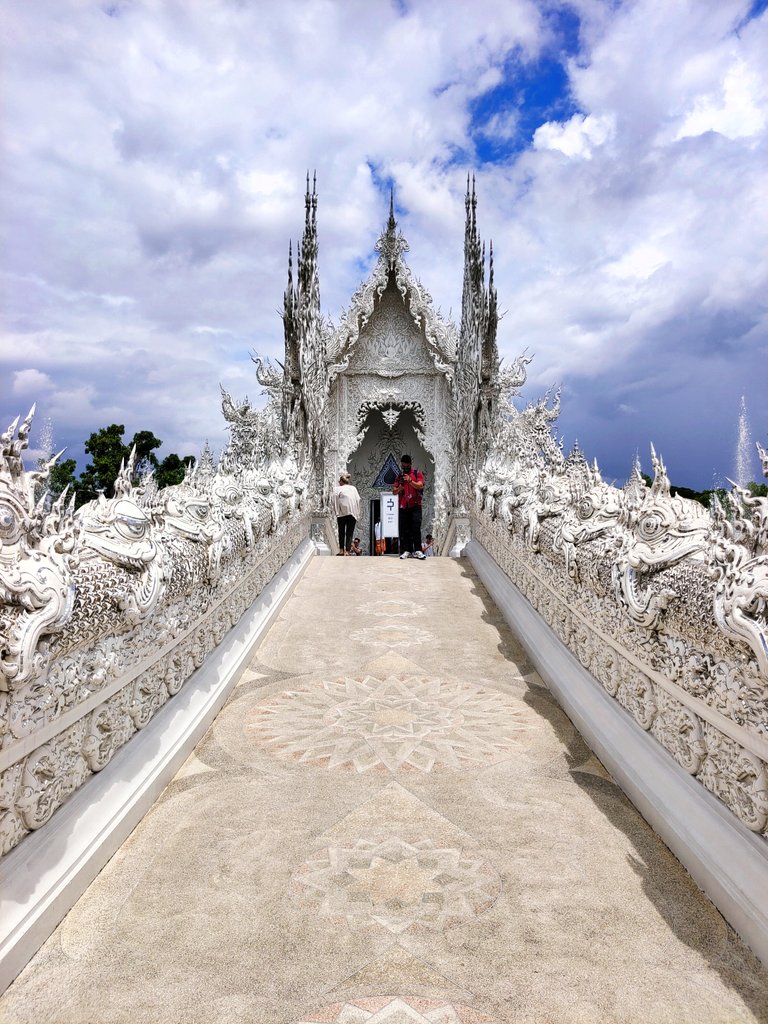
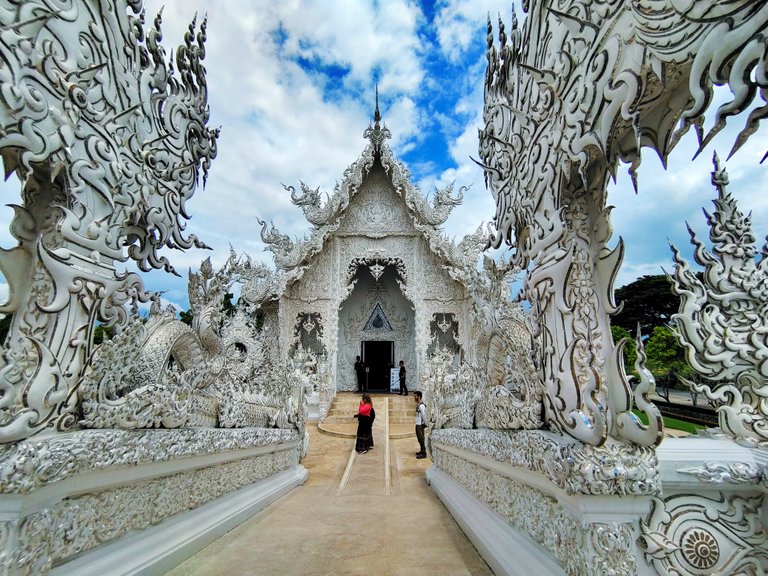
The pure white Ubosot stands tall and proud as the most prominent feature of Wat Rong Khun, leaving an indelible impression on both Thai and foreign tourists alike. Its brilliance and uniqueness have earned it the endearing nickname of the "White Temple."
From the moment I set foot on the temple grounds, I knew I was about to witness something truly extraordinary. As I approached the entrance, the gleaming white facade of the temple sparkled like a radiant gem under the sun's warm embrace. Ajarn Chalermchai's determination to craft unusually beautiful works of art was evident in every meticulously placed detail.
The intricate stucco patterns, crafted with exquisite precision, adorned the temple's exterior, telling stories of Lanna's cultural heritage. Delicate glass pieces formed mesmerizing mosaics that reflected the colors of the surrounding nature, creating a harmonious fusion of ancient tradition and modern brilliance.
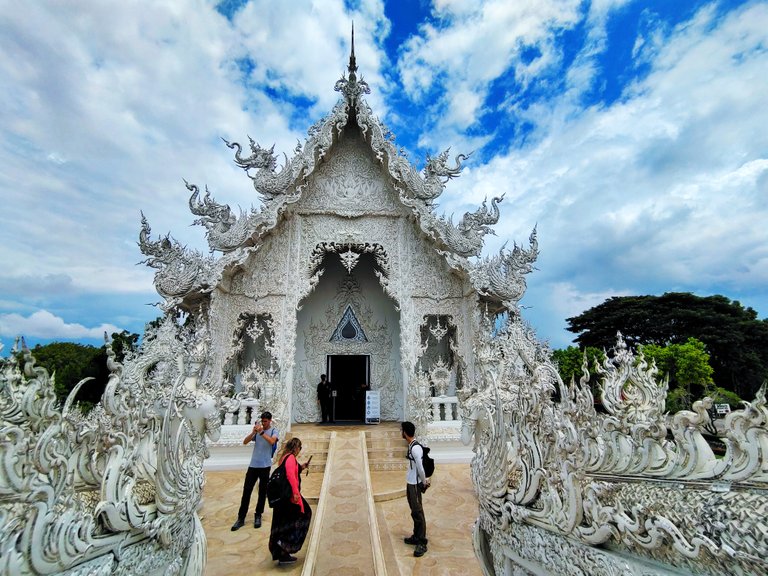
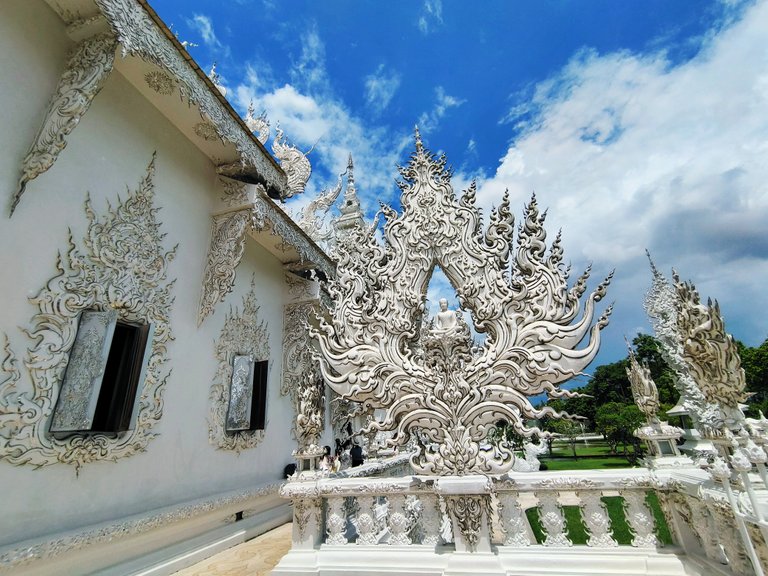
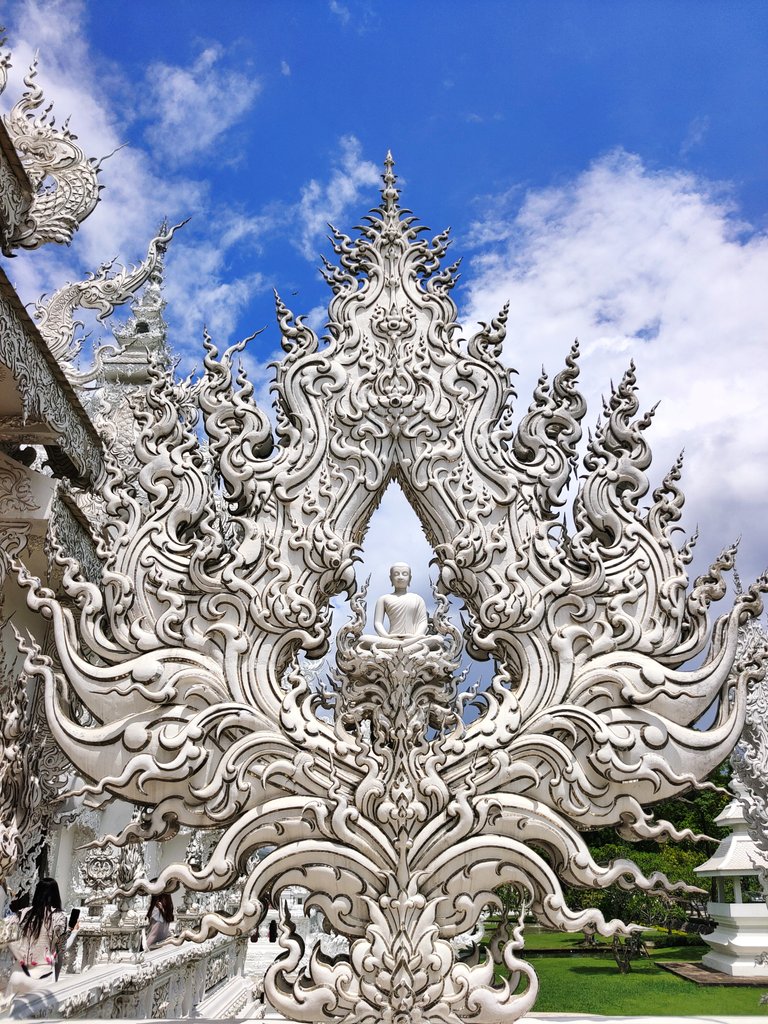

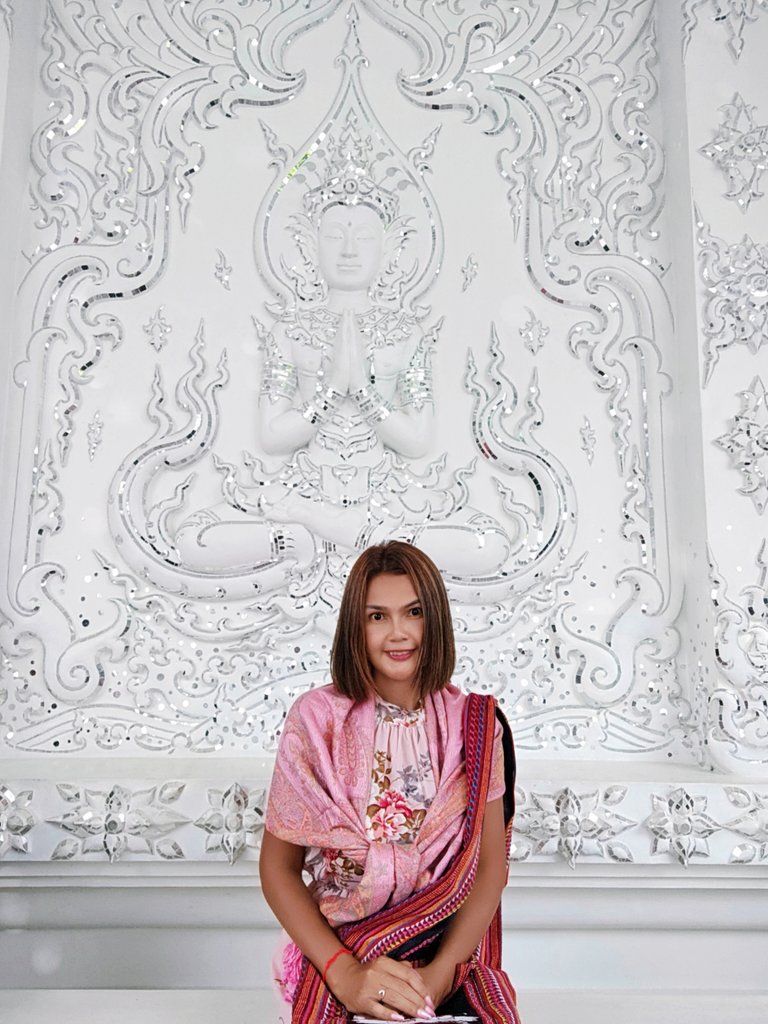
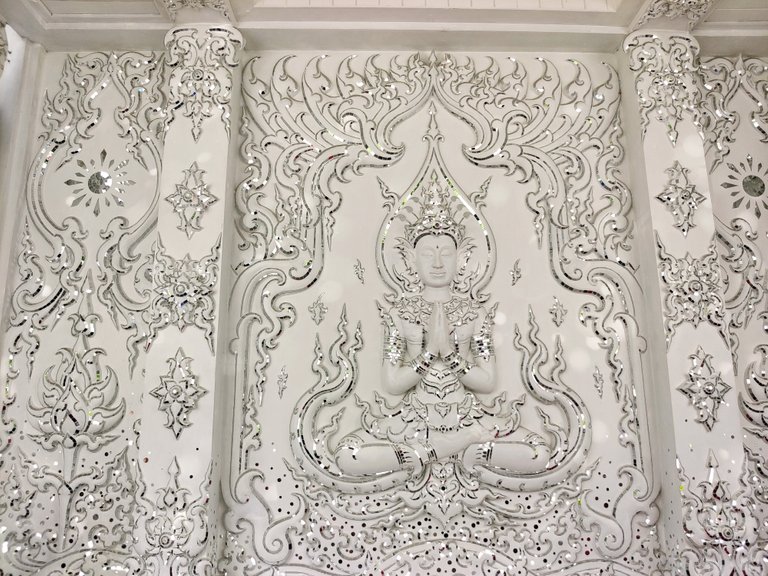
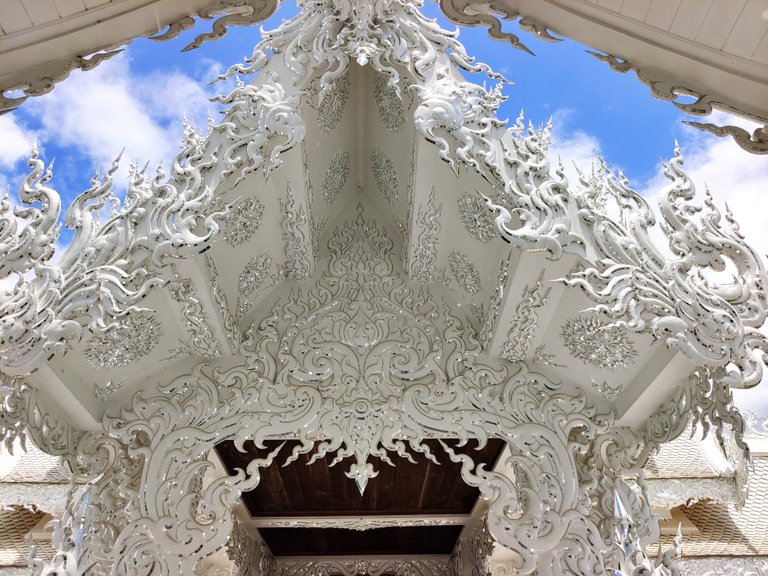

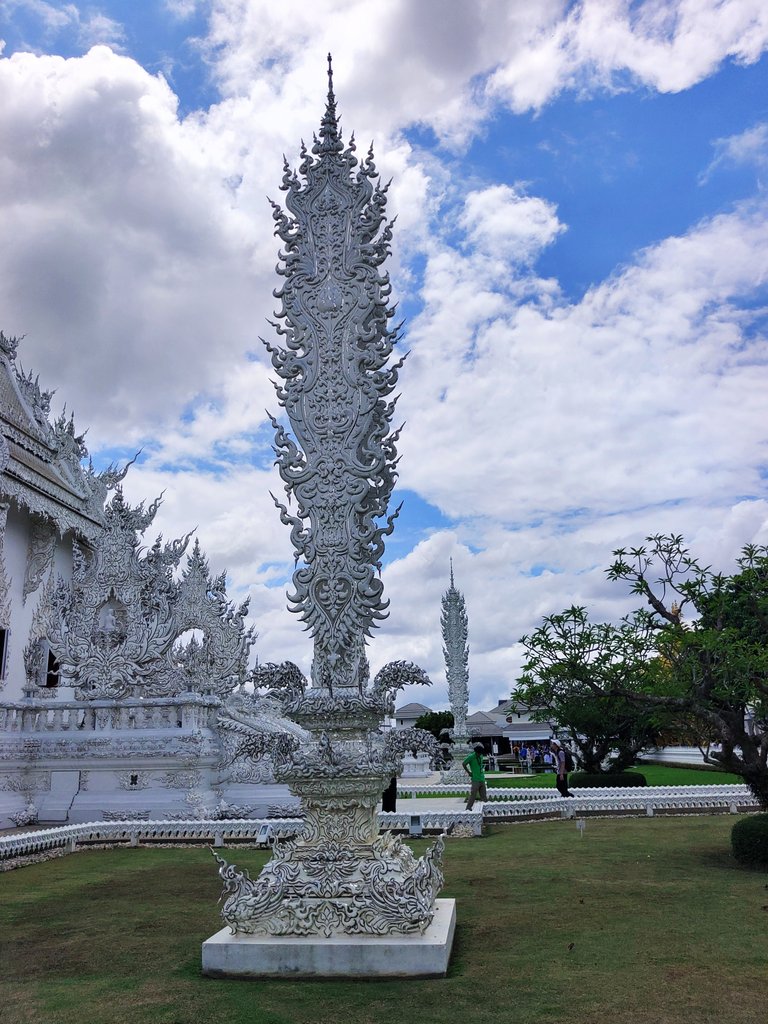
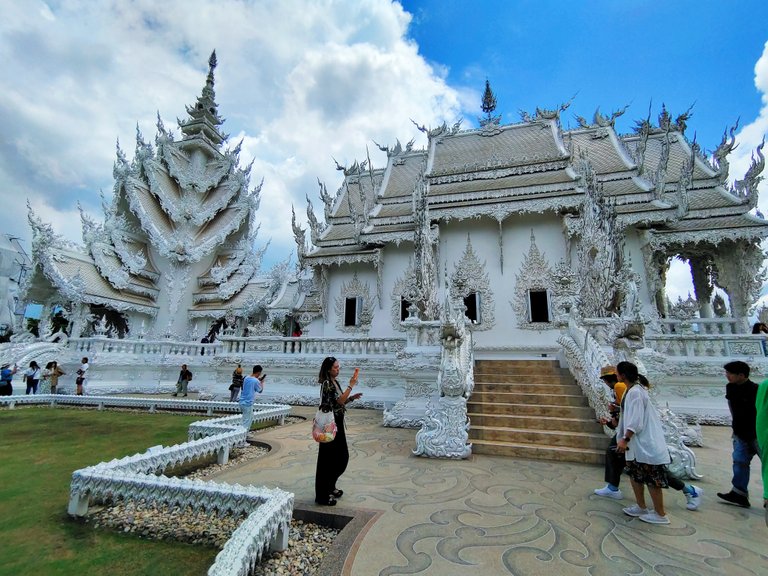
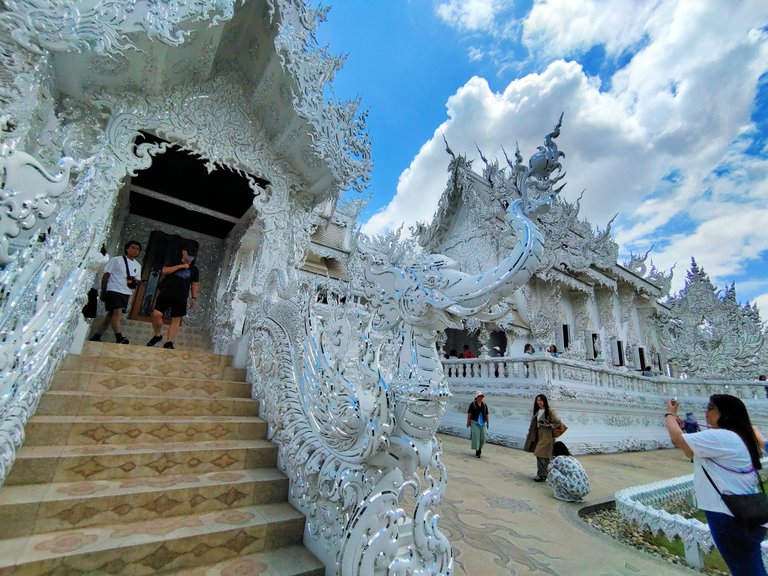
As my gaze moved upward, I noticed another breathtaking detail: the use of mirrors that adorned the temple's exterior. These mirrors, like shimmering stars against the white canvas, represented the Buddha's wisdom, which illuminates the path to enlightenment. The reflective surfaces captured the light and reflected it back, creating an ethereal and almost celestial ambiance around the temple.
The combination of the white facade, delicate patterns, the serpent of purity, and the shimmering mirrors resulted in a captivating masterpiece that blended spiritual symbolism with artistic brilliance. It was no wonder that the White Temple had become an iconic and memorable identity for all who visited.

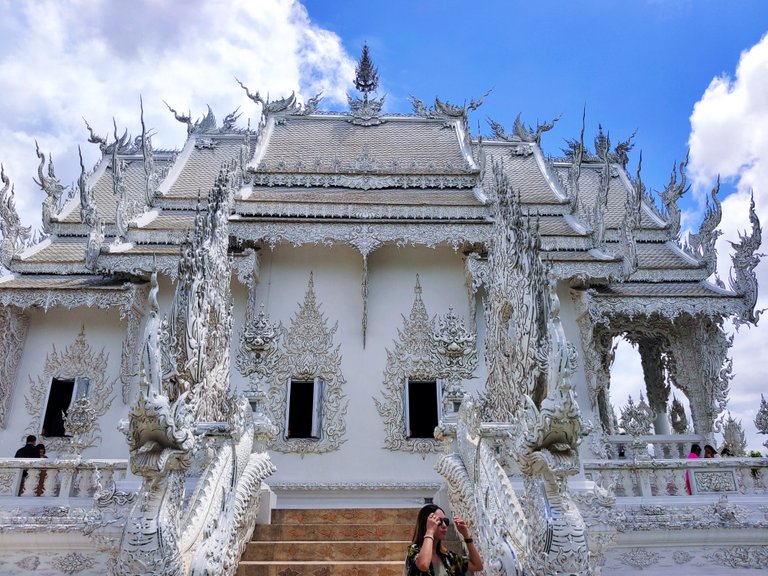


At the gable of the Ubosot, a dazzling serpent caught my eye, gleaming with glass Buddhist symbols. This serpent, with its radiant appearance, symbolized purity and innocence. It was a poignant reminder of the profound teachings of Buddhism, emphasizing the significance of purifying the mind and soul to attain enlightenment.
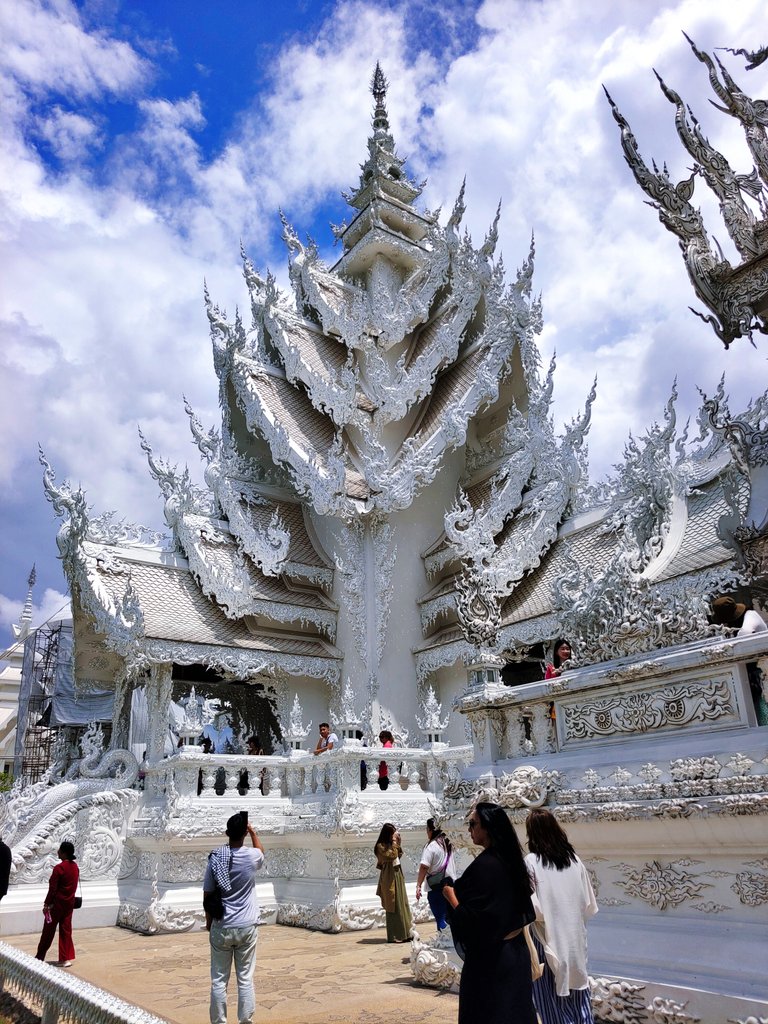
The Ubosot was adorned with magnificent bouquets of delicate patterns that gracefully descended down its exterior walls. The intricate designs, meticulously crafted, showcased the remarkable skills of the artists.


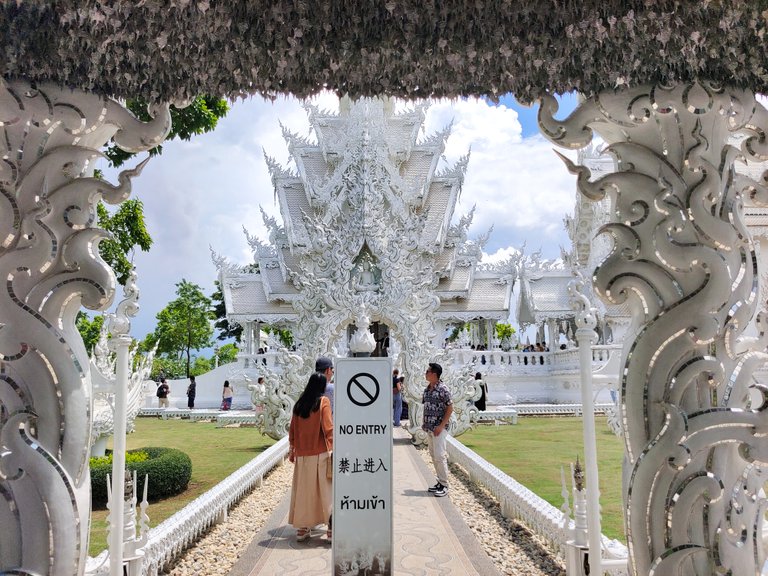
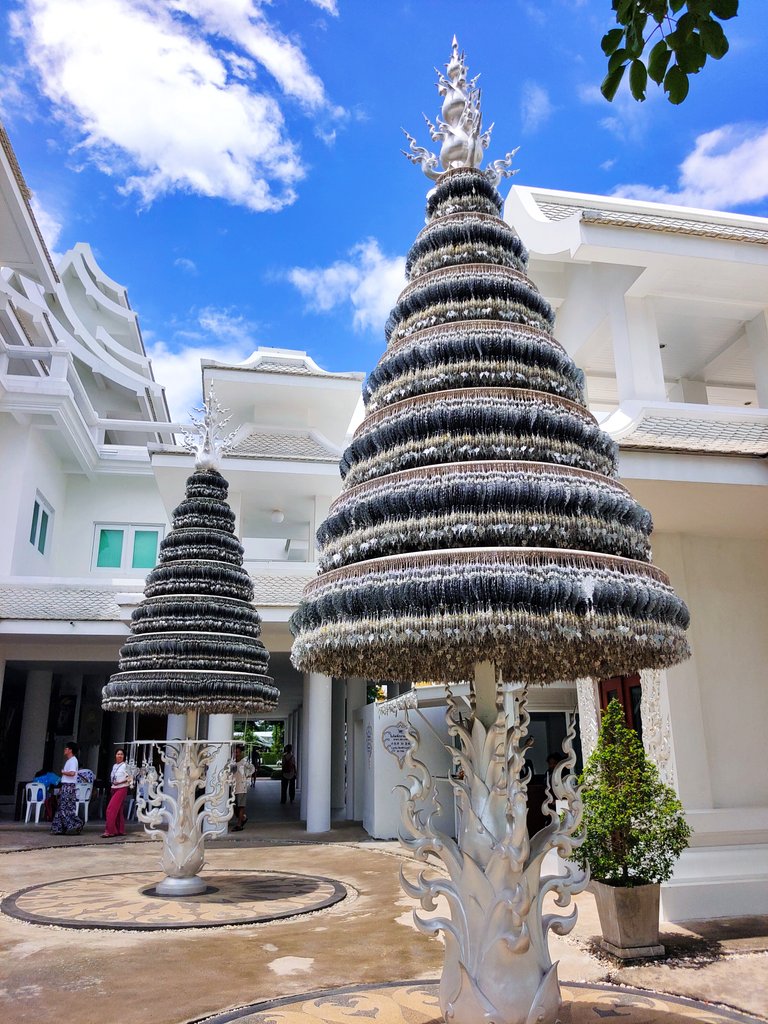
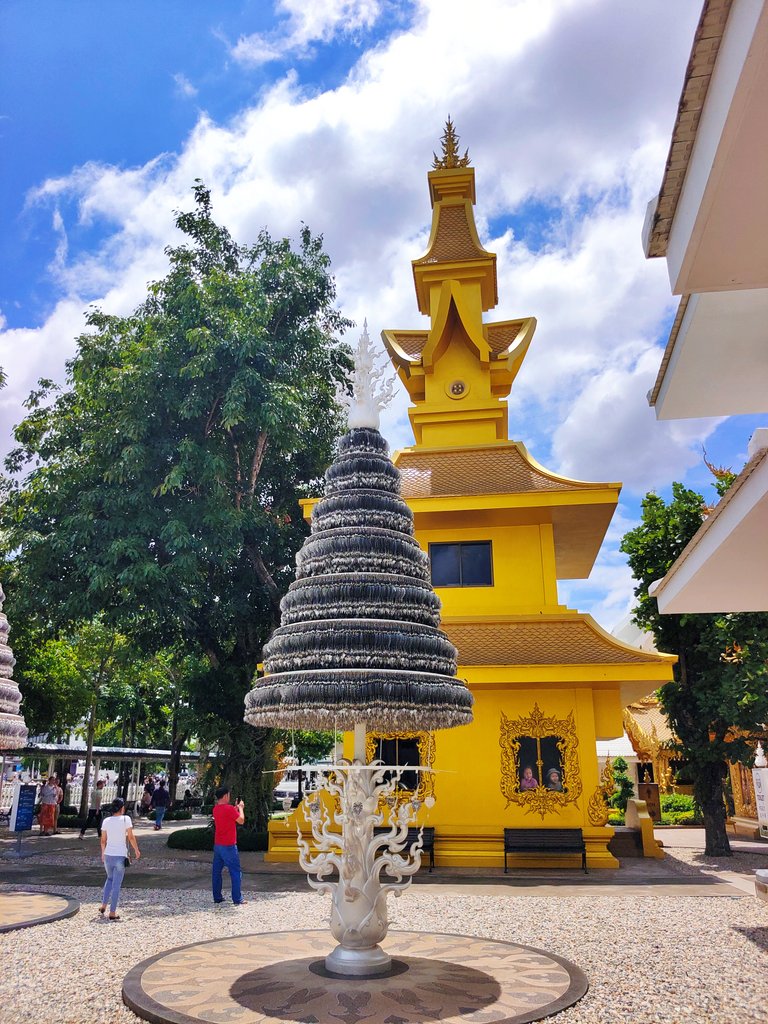
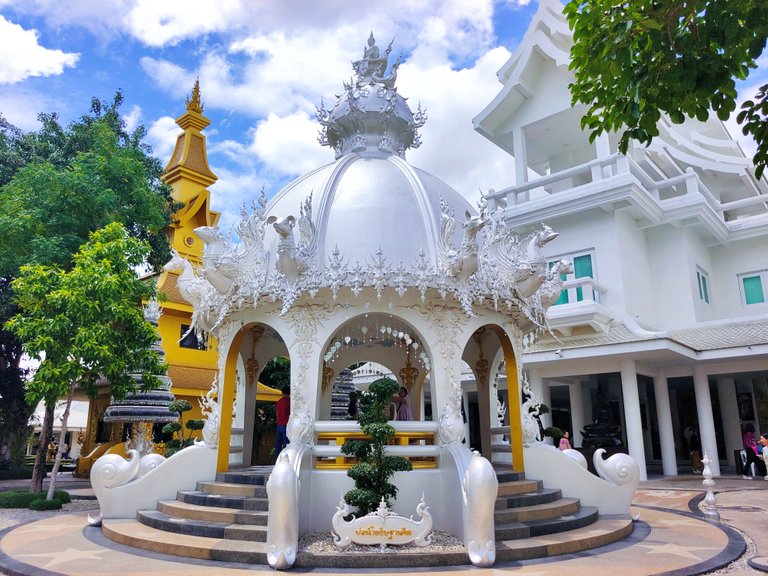
Adjacent to the white Ubosot of Wat Rong Khun, I noticed a quaint and inviting wishing well. The well seemed to exude a sense of mystique, drawing visitors with its aura of sacredness and promise of fulfilled wishes.

As I approached the well, I saw people gathering around, each one carrying a sense of hope and reverence in their hearts. It was clear that this well held a special significance for those who believed in its power to grant their wishes.
With faith and devotion, visitors stepped up to the well's edge, clasping coins in their hands. As they closed their eyes and bowed their heads, their heartfelt prayers resonated in the air. One by one, they released the coins into the water below, believing that their offerings would be carried to the realm of higher spirits, gods, or the divine.
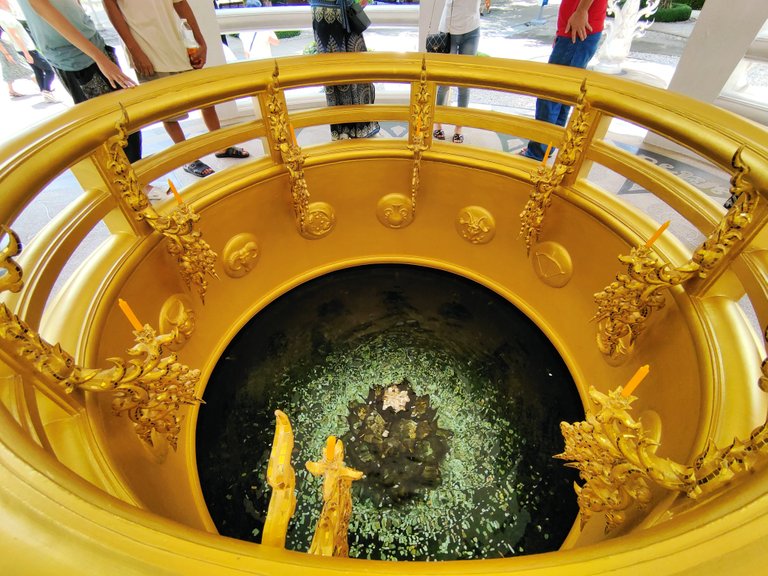
As I watched the coins glisten in the water, I couldn't help but contemplate the power of belief and its ability to shape our perceptions of the world. The act of offering coins to the well was more than a simple tradition; it symbolized an act of surrender, a recognition of the unknown, and a testament to the strength of hope.
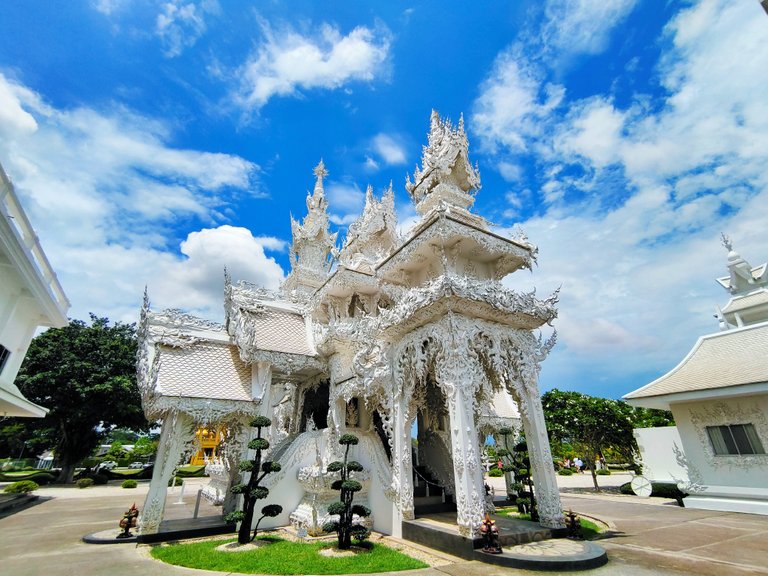
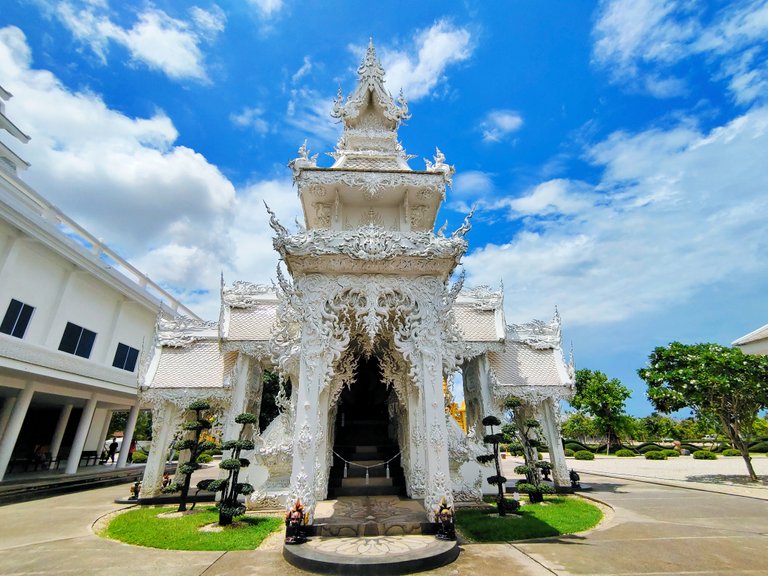
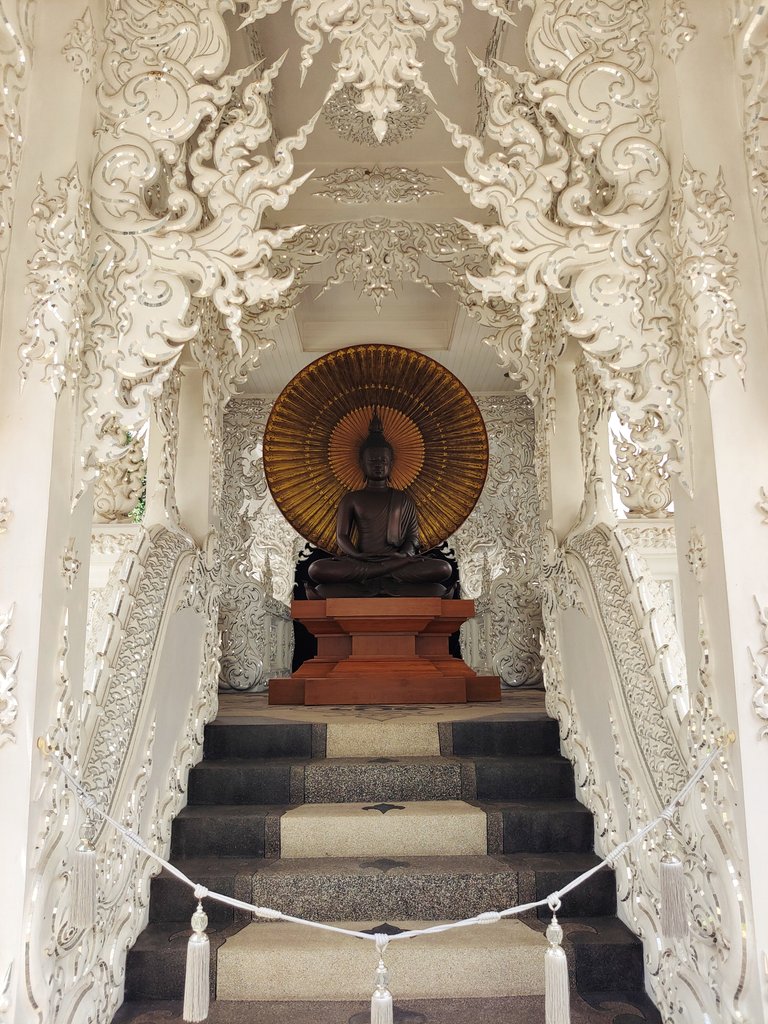
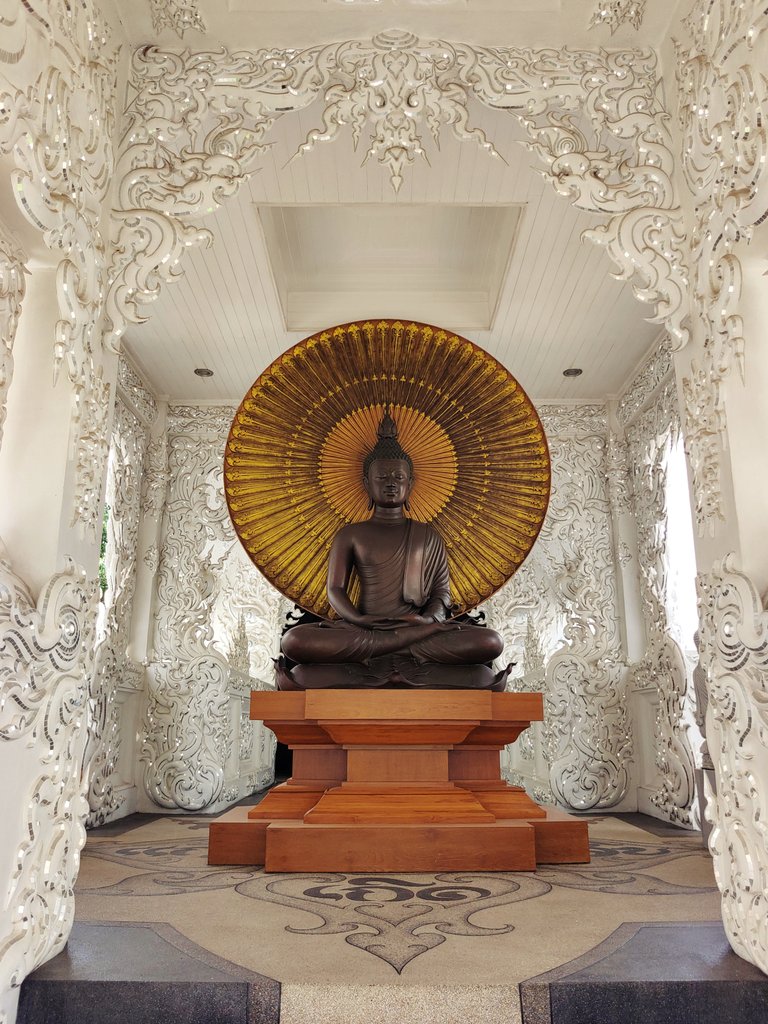
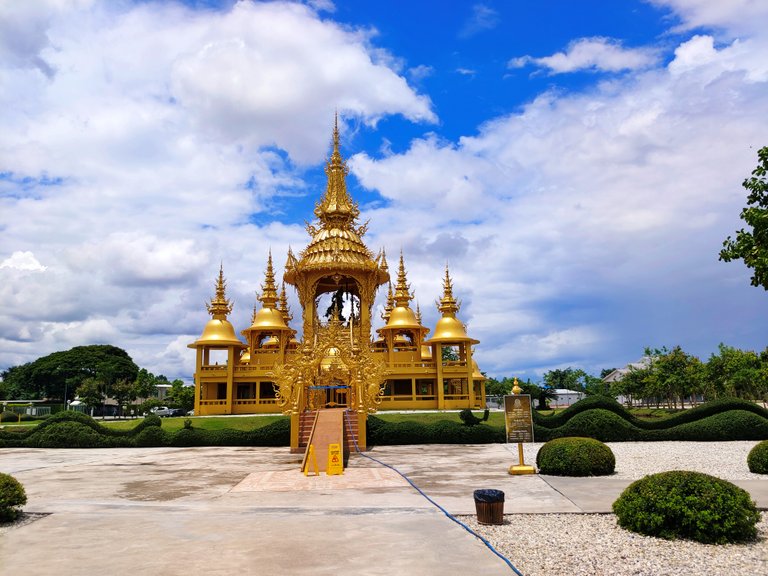
As I continued my exploration of the enchanting Wat Rong Khun, the beauty of the white chapel had already left an indelible mark on my heart. However, I discovered another treasure awaiting me atop a grand staircase - a magnificent golden museum with a captivating Ganesha statue gracing its entrance.

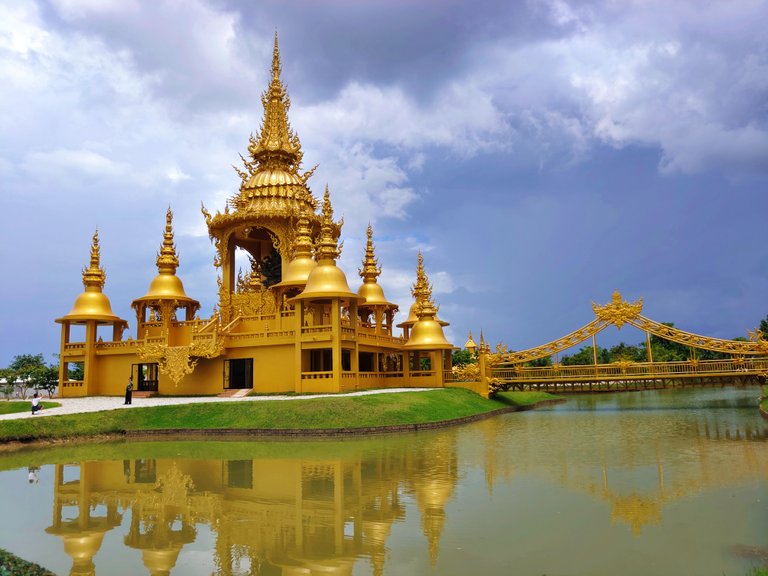
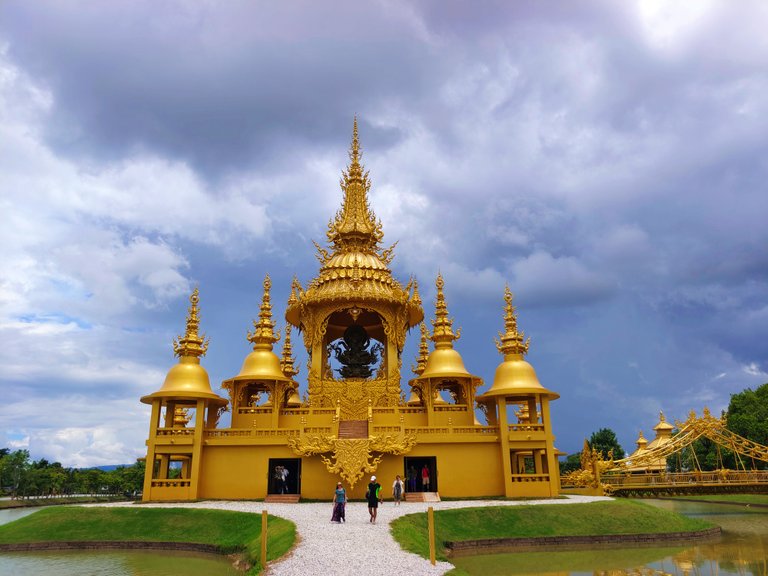
The contrast between the pristine white of the chapel and the radiant gold of the museum was a sight to behold. The warm glow of the golden exterior seemed to emanate a sense of opulence and grandeur. Ganesha, the elephant-headed deity, stood majestically upstairs in the middle of the entrance, symbolizing wisdom, knowledge, and the remover of obstacles - a fitting guardian for the museum of art and culture that lay within.
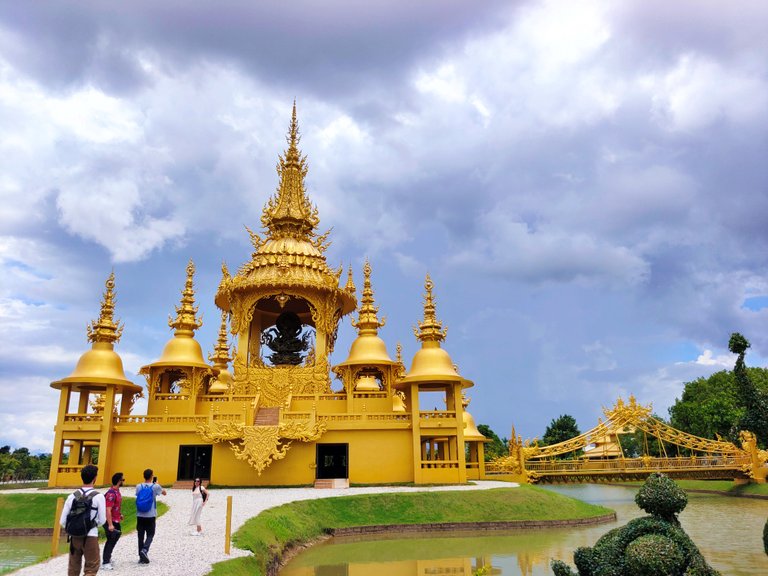
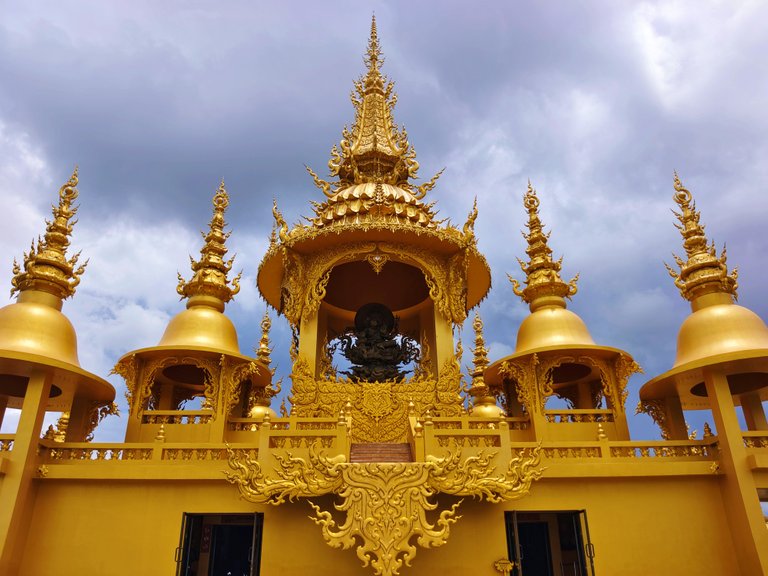
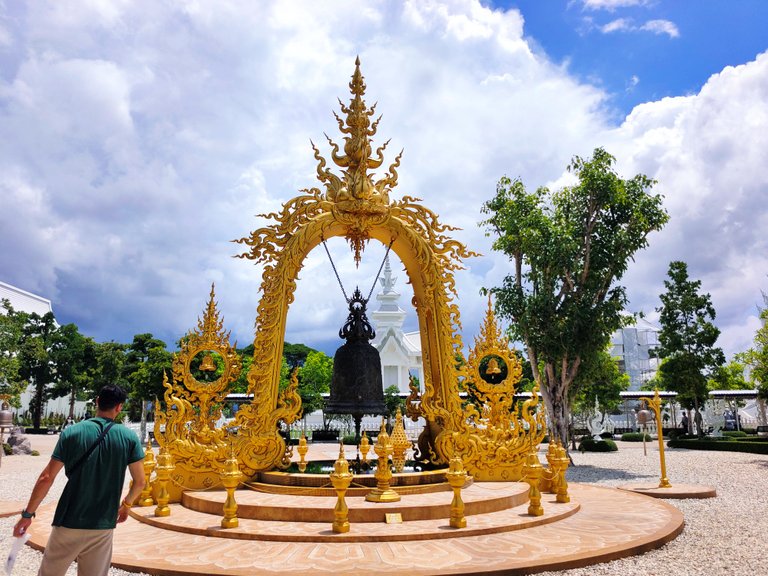
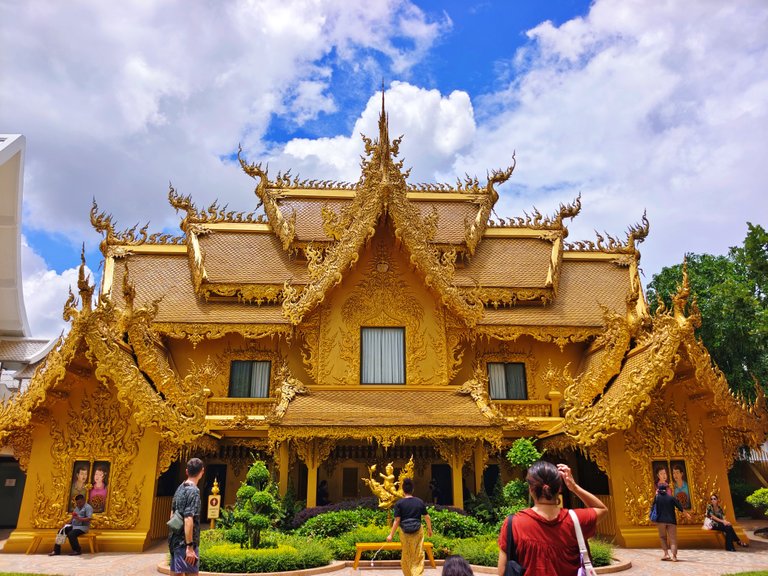
Indeed, Wat Rong Khun stands as a testament to the values of modern Thai art, representing a remarkable fusion of creativity, cultural heritage, and spiritual significance. The temple's creation by Ajarn Chalermchai Kositpipat is a true reflection of his visionary artistic talent and his deep-rooted connection with Thai culture and spirituality.
The act of transforming the land into this awe-inspiring temple showcases the profound appreciation of life and its intrinsic value. Instead of merely utilizing the land for conventional purposes, Ajarn Chalermchai chose to infuse it with a masterpiece that transcends boundaries and has gained international acclaim. The temple's significance extends far beyond its physical location, as it has become a symbol of artistic brilliance that resonates with people from all corners of the globe.
The dedication and passion invested in building Wat Rong Khun exemplify the pursuit of greatness in art and the desire to create something truly exceptional. It is through the harmonious integration of traditional Thai artistry and innovative expressions that this temple has earned its place as a great international artwork.
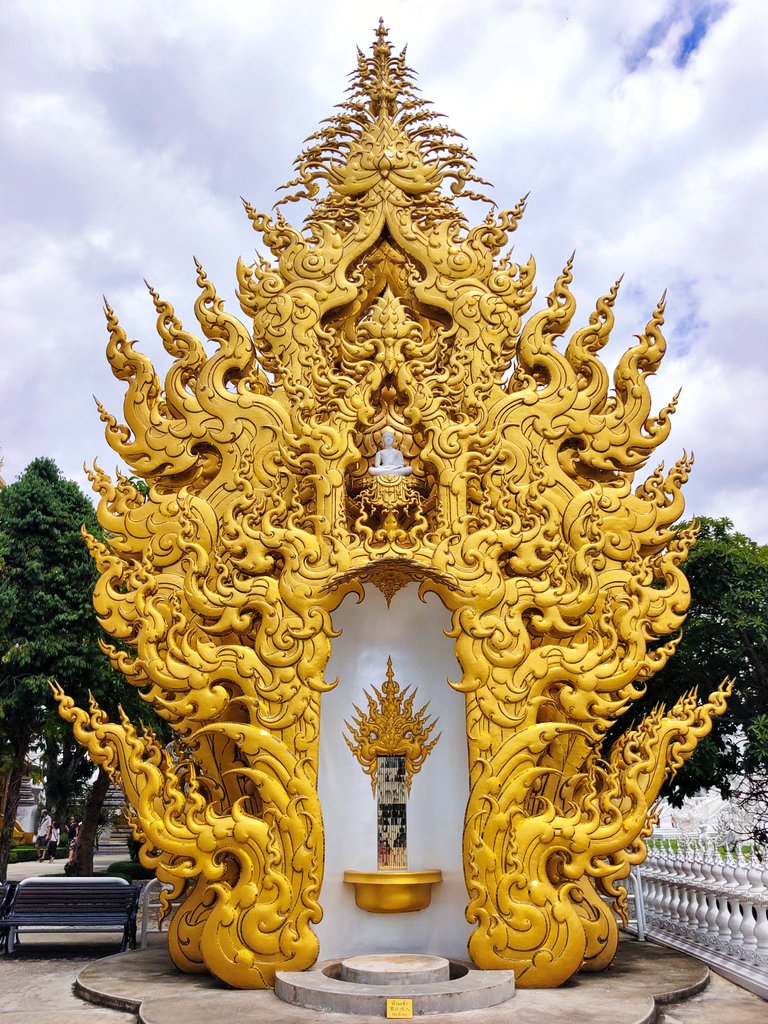
Indeed, the story of Wat Rong Khun is far from over. See you next post.
Thank you for your support
ขอบคุณสำหรับการโหวต
เลิฟนะยู้ววววววว

